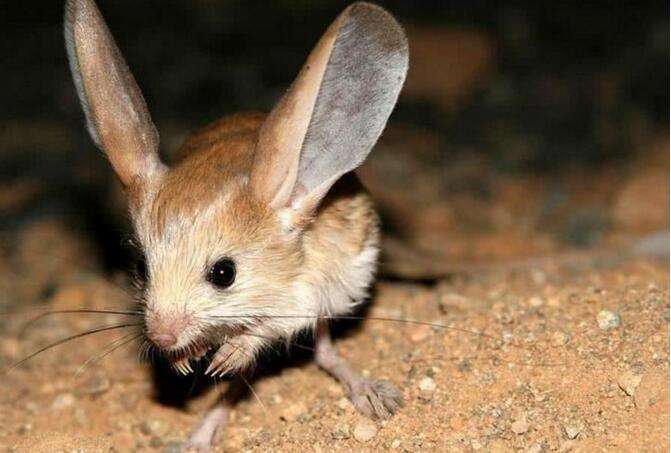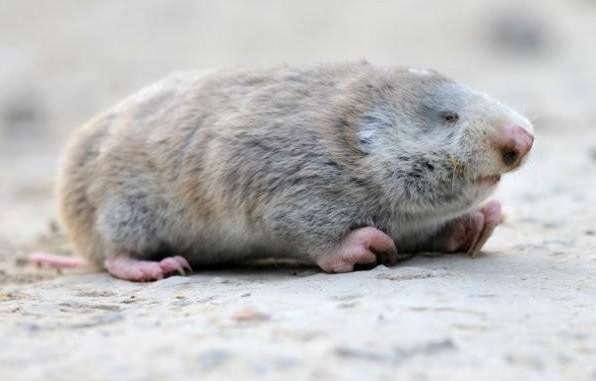It has a round nose like a pig, a pair of long ears like a rabbit, a pair of strong long legs like a kangaroo, and two dripping black eyes. Who is it? It is the long-eared rat, a specialty of our country, also called the long-eared jerboa, a "little elf" that has been jumping around in the Gobi desert for a long time!

Due to the increasing drought of the desert and global warming, Illegal mining and the introduction of wild cats into desert areas have dealt a catastrophic blow to the long-eared rat's survival. At present, it is difficult for us to see long-eared mice in the wild, and even scientific monitoring is rare. Therefore, the long-eared rat is listed as one of the 100 most endangered species in the world by IUCN, with the endangerment level being Endangered (EN). The future of this cute elf may require the joint efforts of you and me.
So, the editor will take you to get to know the long-eared rat today. I hope everyone will know more about it and participate in its protection.
1. Morphological characteristics
Small body, large and long ears; tail length is almost twice the body length; the back of the body varies with region and subspecies Different colors include light yellowish brown, light russet or sandy gray, etc., and the rest of the parts are mostly pure white; the back of the tail is earthy yellow, and the ventral surface is white; there are long hairs at the end of the tail to form a spike, the base of the tail spike is black, and the tip is white; there are sufficient spots on the hind legs and feet. The hair is conducive to jumping in the desert environment and can jump more than 1 meter in the air; the incisors are thin and white, and a small premolar can be found on each side of the upper jaw.
2. Living habits
Most long-eared mice like to be active at night, and their sensory channels include vision, touch, hearing, and chemical perception. It is insectivorous, often locating flying insects by sound, and then quickly jumping into the air to capture flying insects. However, long-eared rats in China are more herbivorous. They also use their good hearing to evade nocturnal predators, and their keen hearing also suggests they may use sounds or vibrations to communicate. Long-eared rats also engage in dust bathing, often as a way of communicating using chemicals.
3. Habitat environment
Desert areas, especially sandy desert areas, halophytic meadows and gravel deserts.
Four, Distribution range
China's Gansu, Inner Mongolia, Ningxia, Qinghai, Xinjiang, and abroad only appears in Mongolia.
5. Reproduction Methods
Mating usually occurs within a short period of time after awakening from hibernation. Each female breeds twice in the summer, between the ages of 2 and 6 years. The gestation period is between 25 and 35 days, and the number of litters is 2 to 6.
Okay, the above is the introduction to the long-eared rat. The editor hopes that each of us can protect them and the environment in which they live, and give them more care and love so that they can continue to survive on the earth.





